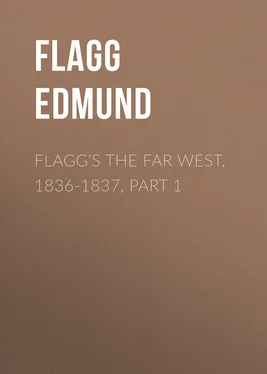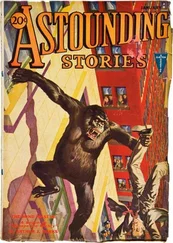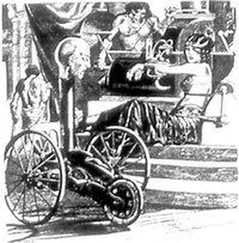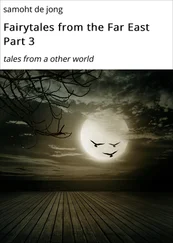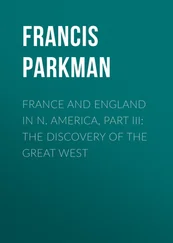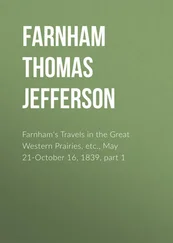Edmund Flagg - Flagg's The Far West, 1836-1837, part 1
Здесь есть возможность читать онлайн «Edmund Flagg - Flagg's The Far West, 1836-1837, part 1» — ознакомительный отрывок электронной книги совершенно бесплатно, а после прочтения отрывка купить полную версию. В некоторых случаях можно слушать аудио, скачать через торрент в формате fb2 и присутствует краткое содержание. Издательство: Иностранный паблик, Жанр: foreign_antique, foreign_prose, Путешествия и география, на английском языке. Описание произведения, (предисловие) а так же отзывы посетителей доступны на портале библиотеки ЛибКат.
- Название:Flagg's The Far West, 1836-1837, part 1
- Автор:
- Издательство:Иностранный паблик
- Жанр:
- Год:неизвестен
- ISBN:нет данных
- Рейтинг книги:4 / 5. Голосов: 1
-
Избранное:Добавить в избранное
- Отзывы:
-
Ваша оценка:
- 80
- 1
- 2
- 3
- 4
- 5
Flagg's The Far West, 1836-1837, part 1: краткое содержание, описание и аннотация
Предлагаем к чтению аннотацию, описание, краткое содержание или предисловие (зависит от того, что написал сам автор книги «Flagg's The Far West, 1836-1837, part 1»). Если вы не нашли необходимую информацию о книге — напишите в комментариях, мы постараемся отыскать её.
Flagg's The Far West, 1836-1837, part 1 — читать онлайн ознакомительный отрывок
Ниже представлен текст книги, разбитый по страницам. Система сохранения места последней прочитанной страницы, позволяет с удобством читать онлайн бесплатно книгу «Flagg's The Far West, 1836-1837, part 1», без необходимости каждый раз заново искать на чём Вы остановились. Поставьте закладку, и сможете в любой момент перейти на страницу, на которой закончили чтение.
Интервал:
Закладка:
Like all other curiosities of Nature, this cavern was, by the Indian tribes, deemed the residence of a Manito 40or spirit, evil or propitious, concerning whom many a wild legend yet lives among their simple-hearted posterity. They never pass this dwelling-place of the divinity without discharging their guns (an ordinary mark of respect), or making some other offering propitiatory of his favour. These tributary acknowledgments, however, are never of much value. The view of the stream from the left bench at the cave's mouth is most beautiful. Immediately in front extends a large and densely-wooded island, known by the name of the Cave, while the soft-gliding waters flow between, furnishing a scene of natural beauty worthy an Inman's pencil; and, if I mistake not, an engraving of the spot has been published, a ferocious-looking personage, pistol in hand, crouched at the entrance, eagerly watching an ascending boat. This design originated, doubtless, in the tradition yet extant, that in the latter part of the last century this cavern was the rendezvous of a notorious band of freebooters which then infested the region, headed by the celebrated Mason, 41plundering the boats ascending from New-Orleans and murdering their crews. From these circumstances this cave has become the scene of a poem of much merit, called the "Outlaw," and has suggested a spirited tale from a popular writer. Many other spots in the vicinity were notorious, in the early part of the present century, for the murder and robbery of travellers, whose fate long remained enveloped in mystery. On the summit of a lofty bluff, not far from the "Battery Rock," was pointed out to us a solitary house, with a single chimney rising from its roof. Its white walls may be viewed for miles before reaching the place on descending the river. It was here that the family of Sturdevant carried on their extensive operations as counterfeiters for many years unsuspected; and on this spot, in 1821, they expiated their crimes with their lives. A few miles below is a place called "Ford's Ferry," 42where murder, robbery, forgery, and almost every crime in the calendar were for years committed, while not a suspicion of the truth was awakened. Ford not only escaped unsuspected, but was esteemed a most exemplary man. Associated with him were his son and two other individuals, named Simpson and Shouse. They are all now gone to their account. The old man was mysteriously shot by some person who was never discovered, but was supposed to have been Simpson, between whom and himself a misunderstanding had arisen. If it were so, the murderer was met by fitting retribution, for he fell in a similar manner. Shouse and the son of Ford atoned upon the gallows their crimes in 1833. Before reaching this spot the traveller passes a remarkable mass of limestone called "Tower Rock." It is perpendicular, isolated, and somewhat cylindrical in outline. It is many feet in altitude, and upon its summit tradition avers to exist the ruins of an antique tumulus; an altar, mayhap, of the ancient forest-sons, where
"Garlands, ears of maize, and skins of wolf
And shaggy bear, the offerings of the tribe
Were made to the Great Spirit."
In the vicinity of the cliff called "Tower Rock," and not far from Hurricane Island, is said to exist a remarkable cavern of considerable extent. The cave is entered by an orifice nine feet in width and twelve feet high; a bench of rock is then ascended a few feet, and an aperture of the size of an ordinary door admits the visiter into a spacious hall. In the mouth of the cavern, on the façade of the cliff, at the altitude of twenty-five feet, are engraved figures resembling a variety of animals, as the bear, the buffalo, and even the lion and lioness. All this I saw nothing of, and am, of course, no voucher for its existence; but a writer in the Port Folio, so long since as 1816, states the fact, and, moreover, adds that the engraving upon the rock was executed in "a masterly style." 43
From this spot the river stretches away in a long delightful reach, studded with beautiful islands, among which "Hurricane Island," a very large one, is chief. 44Passing the compact little village of Golconda with its neat courthouse, and the mouth of the Cumberland River with its green island, once the rendezvous of Aaron Burr and his chivalrous band, we next reached the town of Paducah, at the outlet of the Tennessee. 45This is a place of importance, 46though deemed unhealthy: it is said to have derived its name from a captive Indian woman, who was here sacrificed by a band of the Pawnees after having been assured of safety. About eight miles below Paducah are situated the ruins of Fort Massac, once a French military post of importance. 47There is a singular legend respecting this fort still popular among the inhabitants of the neighbouring region, the outlines of which are the following: The fortress was erected by the French while securing possession of the Western Valley, and, soon after, hostilities arising between them and the natives, the latter contrived a stratagem, in every respect worthy the craft and subtlety of the race, to obtain command of this stronghold. Early one morning a body of Indians, enveloped each in a bearskin, appeared upon the opposite bank of the Ohio. Supposing them the animal so faithfully represented, the whole French garrison in a mass sallied incontinently forth, anticipating rare sport, while the remnant left behind as a guard gathered themselves upon the glacis as spectators of the scene. Meanwhile, a large body of Indians, concealed in rear of the fort, slipped silently from their ambush, and few were there of the French who escaped to tell the tale of the scene that ensued. They were massacred almost to a man, and hence the name of Massac to the post. During the war of the revolution a garrison was stationed upon the spot for some years, but the structures are now in ruins. A few miles below is a small place consisting of a few farmhouses, called Wilkinsonville, 48on the site where Fort Wilkinson once stood; just opposite, along the shore, commences the "Grand Chain" of rocks so famous to the Ohio pilot, extending four miles. The little village of Caledonia is here laid off among the bluffs. It has a good landing, and is the proposed site of a marine hospital.
It was sunset when we arrived at the confluence of the rivers. In course of the afternoon we had been visited by a violent thunder-gust, accompanied by hail. But sunset came, and the glorious "bow of the covenant" was hung out upon the dark bosom of the clouds, spanning woodland and waters with its beautiful hues. And yet, though the hour was a delightful one, the scene did not present that aspect of vastness and sublimity which was anticipated from the celebrity of the streams. For some miles before uniting its waters with the Mississippi, the Ohio presents a dull and uninteresting appearance. It is no longer the clear, sparkling stream, with bluffs and woodland painted on its surface; the volume of its channel is greatly increased by its union with two of its principal tributaries, and its waters are turbid; its banks are low, inundated, and clothed with dark groves of deciduous forest-trees, and the only sounds which issue from their depths to greet the traveller's ear are the hoarse croakings of frogs, or the dull monotony of countless choirs of moschetoes. Thus rolls on the river through the dullest, dreariest, most uninviting region imaginable, until it sweeps away in a direction nearly southeast, and meets the venerable Father of the West advancing to its embrace. The volume of water in each seems nearly the same; the Ohio exceeds a little in breadth, their currents oppose to each other an equal resistance, and the resultant of the forces is a vast lake more than two miles in breadth, where the united waters slumber quietly and magnificently onward for leagues in a common bed. On the right come rolling in the turbid floods of the Mississippi; and on looking upon it for the first time with preconceived ideas of the magnitude of the mightiest river on the globe, the spectator is always disappointed. He considers only its breadth when compared with the Ohio, without adverting to its vast depth. The Ohio sweeps in majestically from the north, and its clear waters flow on for miles without an intimate union with its turbid conqueror. The characteristics of the two streams are distinctly marked at their junction and long after. The banks of both are low and swampy, totally unfit for culture or habitation. "Willow Point," which projects itself into the confluence, presents an elevation of twenty feet; yet, in unusual inundations, it is completely buried six feet below the surface, and the agitated waters, rolling together their masses, form an enormous lake. How strange it seemed, while gazing upon the view I have attempted to delineate, now fading away beneath the summer twilight – how very strange was the reflection that these two noble streams, deriving their sources in the pellucid lakes and the clear icy fountains of their highland-homes, meandering majestically through scenes of nature and of art unsurpassed in beauty, and draining, and irrigating, and fertilizing the loveliest valley on the globe – how strange, that the confluence of the waters of such streams, in their onward rolling to the deep, should take place at almost the only stage in their course devoid entirely of interest to the eye or the fancy; in the heart of a dreary and extended swamp, waving with the gloomy boughs of the cypress, and enlivened by not a sound but the croaking of bullfrogs, and the deep, surly misery note of moschetoes! Willow Point is the property of a company of individuals, who announce it their intention to elevate the delta above the power of inundations, and here to locate a city. 49There are as yet, however, but a few storehouses on the spot; and when we consider the incalculable expense the only plan for rendering it habitable involves, we can only deem the idea of a city here as the chimera of a Utopian fancy. For more than twelve miles above the confluence, the whole alluvion is annually inundated, and forbids all improvement; but were this site an elevated one, a city might here be founded which should command the immense commerce of these great rivers, and become the grand central emporium of the Western Valley.
Читать дальшеИнтервал:
Закладка:
Похожие книги на «Flagg's The Far West, 1836-1837, part 1»
Представляем Вашему вниманию похожие книги на «Flagg's The Far West, 1836-1837, part 1» списком для выбора. Мы отобрали схожую по названию и смыслу литературу в надежде предоставить читателям больше вариантов отыскать новые, интересные, ещё непрочитанные произведения.
Обсуждение, отзывы о книге «Flagg's The Far West, 1836-1837, part 1» и просто собственные мнения читателей. Оставьте ваши комментарии, напишите, что Вы думаете о произведении, его смысле или главных героях. Укажите что конкретно понравилось, а что нет, и почему Вы так считаете.
